The first Windows 10 Arm Mobile PCs were announced a few months ago, all based on Qualcomm Snapdragon 835 processor, with products such as HP Envy x2 (2017) and ASUS NovaGo TP370.
The new products promised LTE connectivity, very long battery price, a user experience similar to the one on Intel/AMD based laptops, and at price points ($600 and up) that should command good performance.
But TechSpot ran some benchmarks on HP Envy x2 (a $1,000 device), and in most cases, the new always-connected PCs come with performance similar or even lower than a Chuwi laptop based on an Intel Celeron N3450 Apollo Lake processor that sells for a little over $400. That appears to be valid for both x86 emulation and native apps.
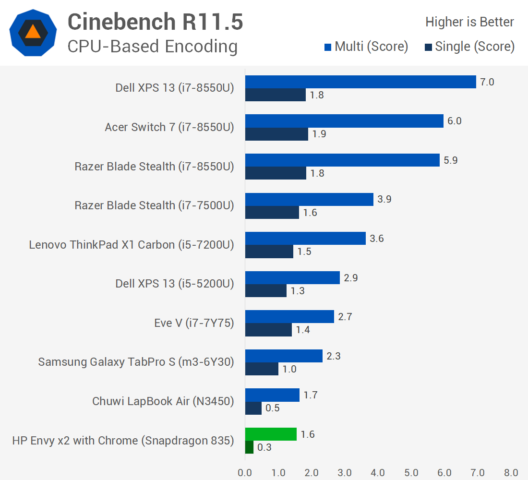
In some case, the Snapdragon laptop does pretty well with performance close to Core m3 / Core i5-5200U processors such as in the Microsoft Excel workload below.
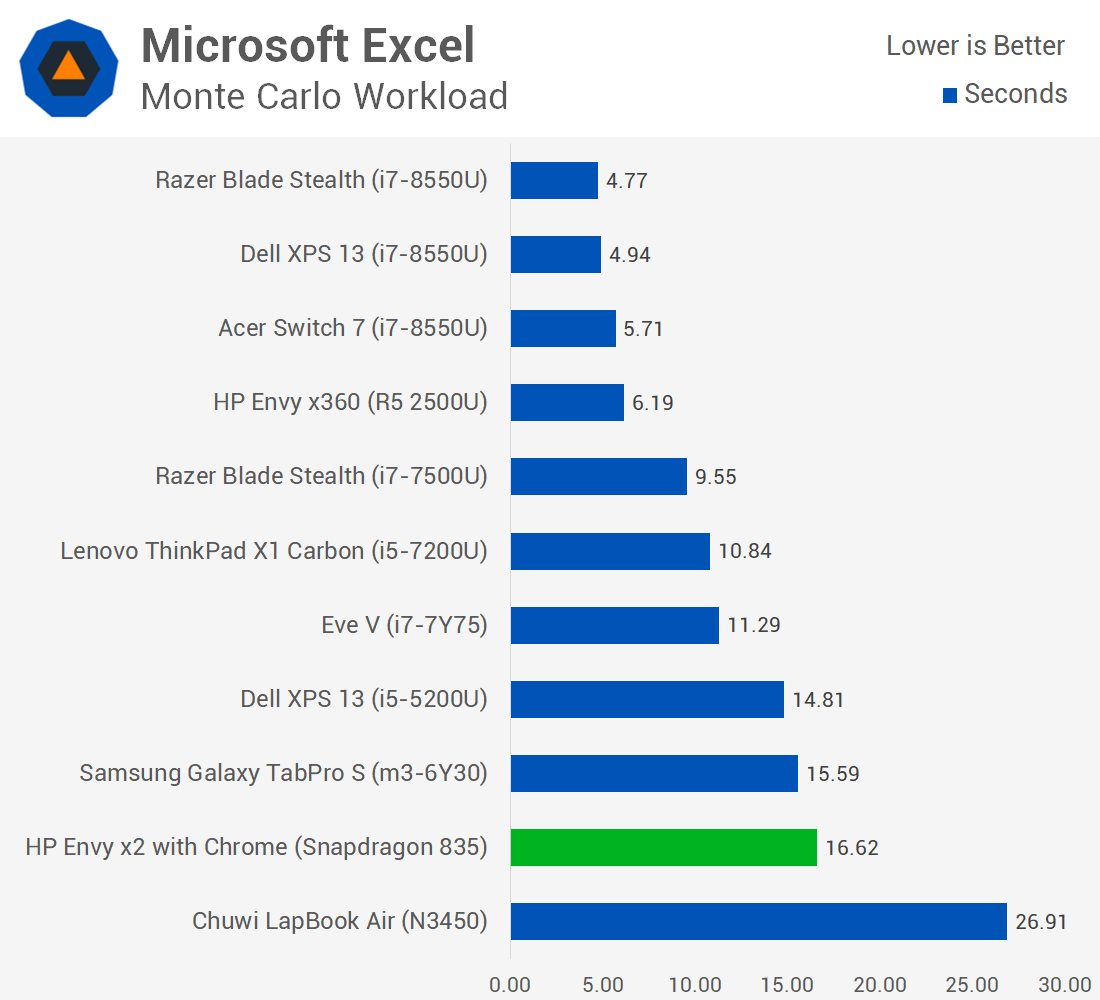
However, you may not want to use Photoshop on Arm until some further software optimizations are performed on the app.
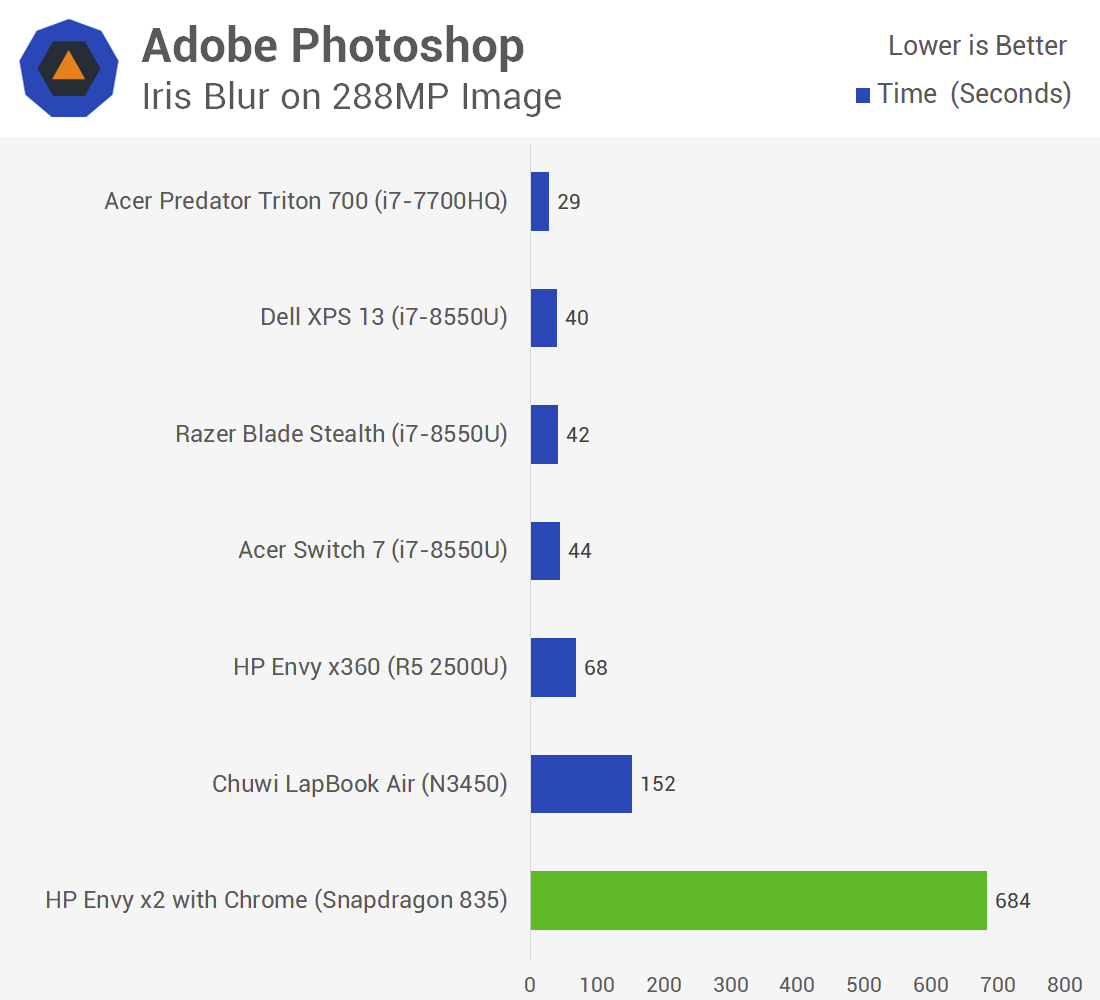
All three benchmarks above are relying on x86 emulation, but native apps fare about the same, for example using Google Octane in Microsoft Edge.
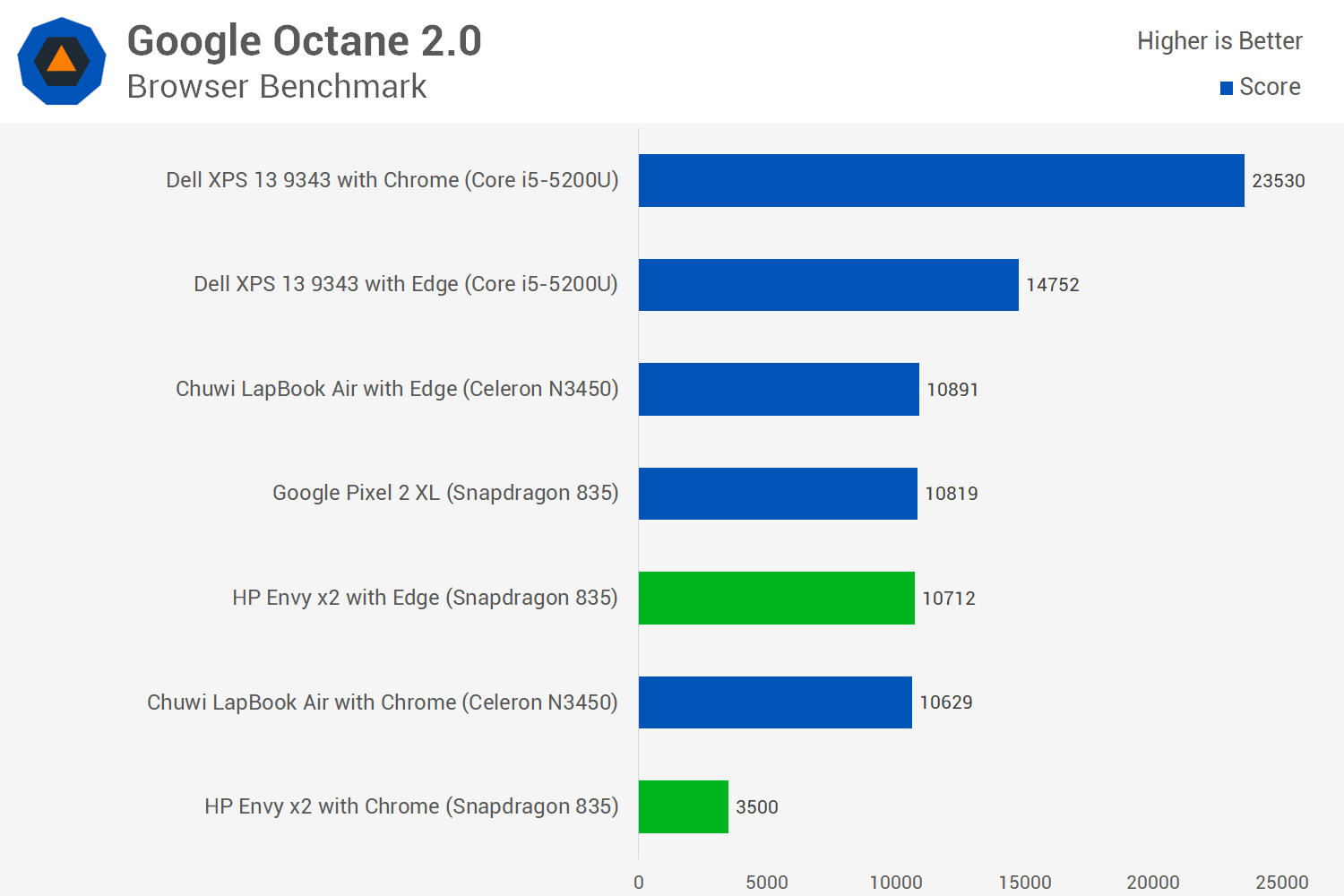
Google Octane 2.0 was also tested with Chrome (x86 emulation) in the chart above, and it shows you may want to stick to Microsoft Edge – at least for now – if you’re ever going to browse the web on an Arm laptop.
However, Arm laptops really shine when it comes to battery life, so that one of the main reasons – together with built-in LTE connectivity – to purchase a Qualcomm Snapdragon powered laptop.
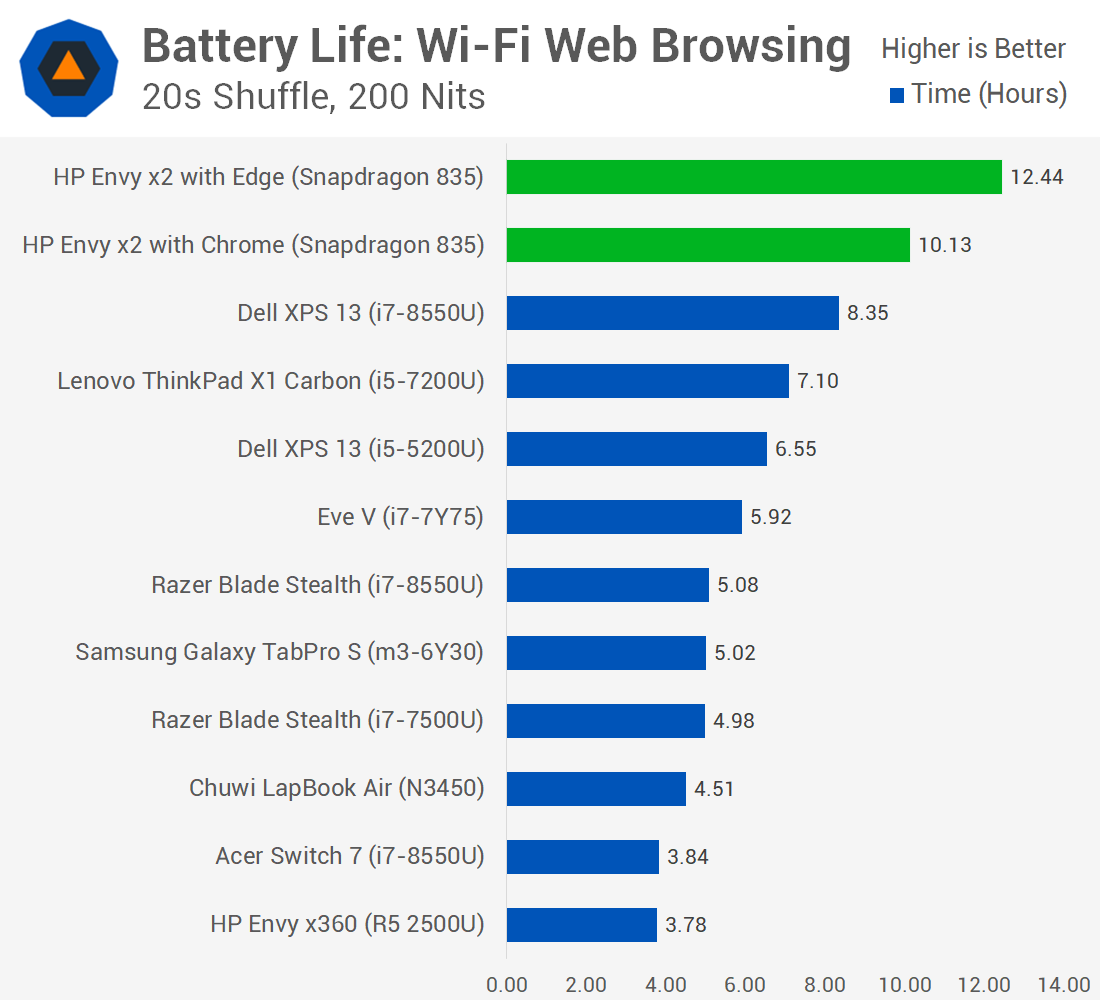
In a WiFi web browsing battery life test, the Snapdragon last close to 13 hours with Microsoft Edge, nearly 3 times longer than Chuwi LapBook Air, and several hours longer than a Dell XPS 13 laptop.
Via Liliputing

Jean-Luc started CNX Software in 2010 as a part-time endeavor, before quitting his job as a software engineering manager, and starting to write daily news, and reviews full time later in 2011.
Support CNX Software! Donate via cryptocurrencies, become a Patron on Patreon, or purchase goods on Amazon or Aliexpress




